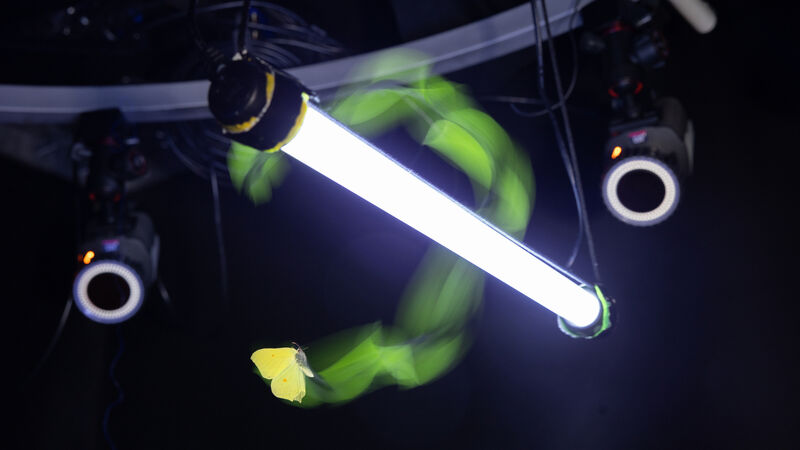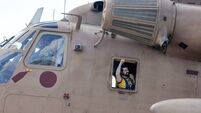Researchers reveal why insects are attracted to lights

Researchers may have solved the mystery of why flying insects are attracted to lights at night (Thomas Angus/Imperial College London/PA)
Researchers may have solved the mystery of why flying insects are attracted to lights at night, appearing to move strangely around the source.
A new study suggests the behaviour is due to insects mistaking the light for the direction of “up”.
The findings indicate that artificial light causes erratic flight, and makes the creatures continually correct their flight path, resulting in insect vertigo and producing what we see as an attraction to artificial light.
Artificial light has been known to attract flying insects for many years, with written records from the Roman Empire describing the use of light to trap insects.
However, the reason for this has been unclear, with previous research proposing that insects may be interpreting artificial light as an escape route, or that the Moon has some role to play.
Corresponding author Samuel Fabian, from Imperial College London, said: “We think the weird flight is due to insects confusing the light with the direction of ‘up’.
“Insects, amongst other animals including fish, use the brightest region (not meaning small sources like the Sun but across big fields of view) as an indicator of where the sky is, and thus which way is up.
“Knowing which way is up is critical for flight, as you must direct flight forces to cancel out acceleration due to gravity.
“However, we’ve started spoiling this general rule by creating bright lights at night.
“Insects think these bright patches are the sky and tilt their backs towards them (called the dorsal-light-response) to redirect their flight forces to where they think gravity should be.
“Unfortunately, they’re wrong about where gravity is, and this imbalance leads them in all sorts of weird flight paths.
“The most obvious example of this is, when insects fly directly over lights, they flip themselves upside down and plummet to the ground.
“Insects can’t accurately measure gravity directly while in the air as they’re pulling all sorts of accelerations that feel the same as gravity and are indistinguishable (G-forces like in a plane).
The researchers used high-speed infrared cameras to track the flights of insects including moths, dragonflies, fruit flies, and hawkmoths – under a range of light conditions.
They found that insects correct their flight course so their back is facing towards the light source.
With natural light sources such as the sun, this response causes the insect to hold a steady flight path correctly oriented with their horizon.
The researchers say an implication of their results is that insects are not exactly attracted to lights at night.
Instead, the bugs people see gathered near lights are those that have fallen into a sensory trap due to an ancient behavioural reflex.
However, the study only looked at recordings around one to two metres from the light, and the observations may be different at longer ranges.
Dr Fabian said: “This paper emphasises that light at night is pollution – simply blasting light up into the sky makes our wildlife, our body clocks, and our astronomers very unhappy.
“However, we can’t live without it. Small things like making lights motion-activated can reduce the amount of light whilst keeping them useful.
“It’s also worth bearing in mind that the type of light matters – in general, the piercing daylight-style LED lights replacing streetlights all over the country are much worse for wildlife at night and are more likely to confuse insects.”
– The findings are published in Nature Communications.










